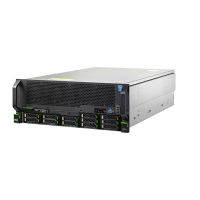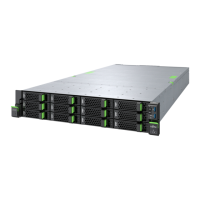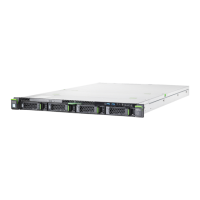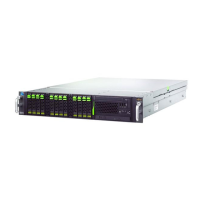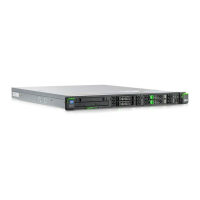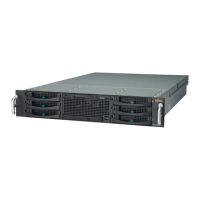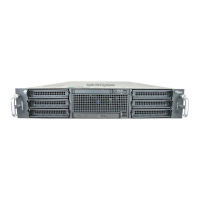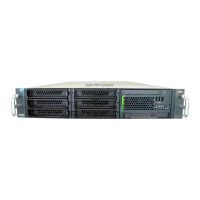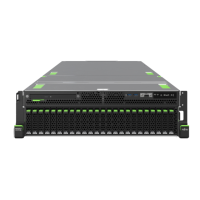
Do you have a question about the Fujitsu PRIMERGY RX4770 M6 and is the answer not in the manual?
| Processor | Intel Xeon Scalable Processors |
|---|---|
| Memory | Up to 4 TB DDR4 |
| Storage | Up to 24 x 2.5" drives |
| Expansion Slots | Up to 10 PCIe 4.0 slots |
| Network | Multiple 10GbE options |
| Power Supply | Redundant power supplies |
| Management | Integrated Remote Management Controller (iRMC) |
| Operating System Support | Windows Server, Linux distributions |
Explains the manual's purpose and intended audience for upgrade/maintenance tasks.
Defines symbols and text formatting used throughout the manual.
Outlines steps before starting any upgrade or maintenance task.
Describes the three complexity categories assigned to maintenance procedures.
Provides information on the estimated time for hardware maintenance tasks.
Lists required tools for maintenance tasks and where to find specific lists.
Guides on downloading and listing available manuals for reference.
Introduces essential safety information for working on the server.
Lists fundamental safety instructions also found in other manuals.
Explains ENERGY STAR certification and factors affecting energy consumption.
States system compliance with European regulations and provides a link to the CE declaration.
Addresses FCC and ICES compliance for Class A digital devices and interference mitigation.
Covers environmentally friendly design, energy saving, packaging, and consumable disposal.
Guides on using ServerView Suite for planning upgrades and replacements.
Provides instructions on how to remove the server's front cover using the lock.
Details the procedure for safely shutting down the server before maintenance.
Step-by-step guide to safely disconnect the AC power cord from the PSU.
Safety precautions before accessing internal server components.
Safety precautions to take before reassembling server components.
Guide on connecting the AC power cord to the PSU and power outlet.
Steps for powering on the server, including safety checks.
Instructions for attaching and securing the front cover with the lock.
Identifies the locations of riser modules and their PCIe slots.
Details how to remove and install the fan cage assembly.
Instructions for removing and installing air ducts from the system board.
Steps for removing and installing the top system board carrier.
Notes that some information may not apply based on server and installed features.
Explains how to suspend BitLocker, disable boot watchdog, and remove media.
Covers BIOS/iRMC updates, verifying backups, updating firmware, and resetting counters.
Safety precautions related to handling and installing PSUs.
Details PSU configurations, hot-plug support, and redundant/non-redundant modes.
Instructions for installing, removing, and replacing hot-plug PSUs.
Details the process for replacing the power distribution board.
Safety precautions for handling HDDs/SSDs, including data backup and ESD.
Describes HDD/SSD subsystem configurations and connection methods.
Details installation/removal of the frame, necessary only in Japan.
Shows the layout for HDD/SSD or PCIe SSD modules.
Provides steps for installing 2.5-inch HDD/SSD modules, including drive bay location.
Details the procedure for removing HDD/SSD modules, including RAID considerations.
Guide on replacing 2.5-inch HDD/SSD modules, with tool requirements.
Details the process for replacing the 8x 2.5-inch HDD backplane.
Instructions for replacing the 24x HDD backplane and SAS expander.
Guide for upgrading HDD/SSD configuration from 8 to 16 drives.
Details on how to replace the SAS expander board.
Safety precautions for handling internal server components and fans.
Describes the server's fan configuration, including hot-plug modules and redundancy.
Provides preliminary steps and tools needed for replacing a fan module.
Safety precautions for handling internal cables, devices, and ESD-sensitive components.
Provides diagrams of PCIe slots on the top and bottom system boards.
Details how to install and remove slot brackets.
Explains the hot-pluggable nature and system configuration dependency for SFP+ modules.
Shows the location and installation/removal of OCP modules.
Preliminary steps and instructions for installing/removing/replacing expansion cards in PCIe slots.
Preliminary steps and instructions for installing/removing/replacing expansion cards in riser modules.
Preliminary steps and instructions for installing/removing/replacing GPU cards in riser modules.
Details the process for replacing a riser card.
Shows FBU positions, installation, removal, and replacement procedures.
Safety precautions for handling memory modules, including thermal warnings and ESD.
Diagrams of memory slots and details on population conditions and modes of operation.
Provides instructions for installing memory modules on both system boards.
Details the process for removing memory modules from system boards.
Guide on replacing memory modules on both system boards.
Explains the requirement and procedure for installing dummy modules.
Safety precautions for handling CPUs, including ESD sensitivity and socket contact care.
Diagrams of CPU locations and lists supported CPUs and population requirements.
Details the procedure and tools for upgrading to a 4 CPU configuration.
Provides hardware and software requirements for replacing CPUs or heat sinks.
Safety precautions related to CPU handling and ESD for liquid cooling systems.
Notes chapter validity for Japan/Asia and LC configuration availability.
Outlines preliminary steps and tools for replacing CPU or LC kit.
Safety precautions for installing, handling, and disposing of accessible drives.
States that one 5.25-inch slimline ODD can be installed.
Shows the location of the ODD bay and routing of the ODD cable.
Preliminary steps and tools required for installing an ODD.
Preliminary steps and instructions for removing the ODD.
Guide on replacing the ODD, including preliminary steps and concluding actions.
Safety precautions for inserting the COP and handling ESD-sensitive components.
Explains the COP mounting and front VGA connector.
Details the COP replacement process, system information backup, and precautions.
Preliminary steps and tools for replacing the front VGA connector.
Safety precautions for handling hot components and ESD-sensitive parts.
Introduces instructions for the system board and its components like CMOS battery and TPM.
Details tools and steps for replacing the CMOS battery.
Lists TPM kit components and details installation/removal/replacement.
Explains the necessity of the iRMC microSD card for eLCM functionality.
Describes M.2 slots and instructions for installing/removing/replacing M.2 SSDs.
Shows position and guides for installing/removing/replacing Dual microSD 64GB Enterprise.
Preliminary steps and tools for replacing UPI sideband and signal cables.
Details preliminary steps and tools for replacing the top and bottom system boards.
Shows server front, rear, and interior views with component labels.
Diagrams and descriptions of onboard connectors and indicators on system boards and panels.
Lists related documents available in the appendix.
